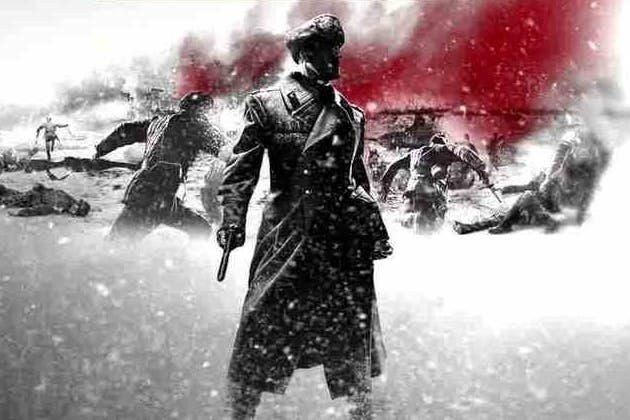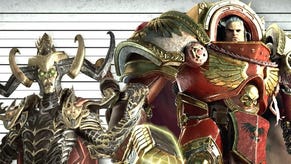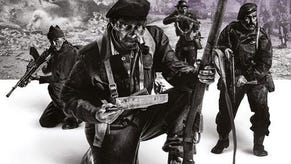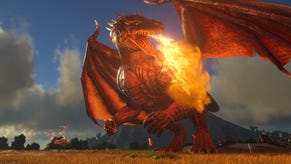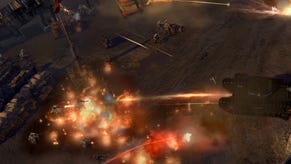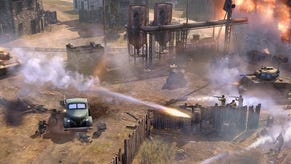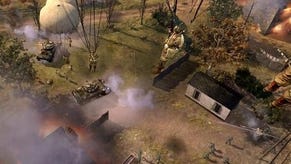Company of Heroes 2 review
Baby, it's cold outside.
Early in Company of Heroes 2's campaign mode, there is a single line of dialogue that so succinctly encapsulates the spirit of this World War 2 strategy game that it could have featured as the title's tagline. "Do not be discouraged by a few losses," comes the bark of a Soviet officer as the Red Army's ill-equipped recruits scramble to reclaim a beleaguered Stalingrad.
What passes for an Eastern Front rallying call does little to bolster the morale of the rookies, some of whom don't even have a weapon to fire in anger, but as the hours pass it feels like it's meant as much for the player as it is for the for the conscripts. Ultimately, it turns out to be a call that should be heeded across every mission, mode and map if you're to derive maximum enjoyment from Relic Entertainment's sequel.
It's not that Company of Heroes 2 is particularly difficult - not on the standard difficulty level at least. It's more that the manner in which certain elements of the game design are introduced and subsequently managed can leave you a little hazy on how best to approach a given situation. Basic concepts like grouping squads for effective unit management and the utilisation of troop abilities are left largely up to you to experiment with.
Unfortunately, this isn't the kind of experimentation that empowers you as you test the flexibility of approach and marvel at its versatility. Instead, it's the kind of experimentation that comes simply from trying to figure out how best to keep track of everything and prevent units straying off course when moving from A to B. Unsurprisingly, this leads to a few losses (that you should not be discouraged by) as you get to grips with things the game's early levels don't deign to highlight.

Of course, Company of Heroes veterans will feel immediately at ease with navigating the various tabs, icons and hotkeys to marshal idle units on multiple fronts. In this regard, and much like their in-game counterparts, it's the rookies that are going to bear the brunt of an occasionally obtuse management system. Certainly, for the first half of the campaign, selecting all onscreen units with a drag of the mouse and pointing them at the enemy is a valid and successful tactic.
Then, during an excellent level in which a small band of Soviet brothers hunt a German Panzer through a snow-covered village, this tactic abruptly stops working. The game is immediately all the better for it as you start to look properly at how best to combine squad abilities; using snipers and engineers in conjunction with one another to keep track of the mechanical behemoth while laying traps and claiming abandoned anti-tank artillery.
It's at this point that the campaign becomes much more fulfilling, as it starts to reward canny strategy rather than simply yielding to the tactical equivalent of using a hammer to crack walnuts. However, it might come as something of a shock to those that have been happily breezing through the game on a wing and a prayer and so, while losses will follow, discouragement should not.
One of the key elements to understand is effective utilisation of Soviet conscripts that, depending on the resources you have to hand, can occasionally feel near limitless. On their own they are little more than cannon fodder, but they are actually vital for plugging holes in your defences and shoring up more experienced veteran squads that have earned associated stat bonuses. Given enough time, you may even start to view the sacrifice of conscripts as a useful way to slow the enemy vanguard in order to buy time for a more strategic counterattack - which feels at odds with what the sometimes heavy-handed cut-scenes are trying to convey.

The single-player is where Relic has invested the most effort to create drama and epic spectacle, but it's actually beyond the campaign that Company of Heroes 2 really starts to shine. Freed from the desperate attempt to provide context for the harsh brutalities of war, the generous amount of content beyond those 14 story levels shows moments of genuine brilliance and variety.
Online multiplayer ranges from tense 1v1 up to riotous 4v4. The victory point mode splits maps into individual territory segments that must be captured and held in order to reduce the opposing team's score to zero. It's in this mode that you really start to understand the importance of Company of Heroes' resource management, as manpower, munitions and fuel dictate everything from the bases you can build and troops you can recruit to the individual abilities that can be used. Capturing and retaining control of the sectors that bolster these resources becomes just as important as holding the command posts that contribute to victory.
Further strategic considerations revolve around the need to keep your individual sectors connected to one another to form a contiguous supply line. Against a human opponent, decisions have to be constantly re-evaluated, as the shock-and-awe tactic of ranging deep into enemy territory to capture key points and disrupt their supply line must be balanced with reinforcing your own territory.
It's here that strategy really pays off, and playing in a team can allow each player to specialise in a particular role. Myriad customisation options for both individual commanders and general load-outs allow you to further tailor your resources to match your preferred strategy. Playing in a group of players of a similar skill level makes for the best and most gleefully exhausting matches, but it's playing both alongside and against more skilled players where you'll learn the varied tactics that the campaign neglects to teach you. Of course, you'll suffer some losses - but, as we all know, that's never something to be discouraged by.

Bringing together Company of Heroes' single- and multiplayer elements is the Theatre of War, which serves as a framework for a multitude of single-player skirmishes, co-op missions and standalone challenges across a single year of the war on the Eastern Front. The glut of content included in Theatre of War will be bolstered by future download add-ons, but as it stands it offers a variety of missions for both the Soviet and German armies. There are multi-part levels where you'll wreak near ludicrous levels of destruction through to quieter missions where you'll guide a handful of men and women across a snowy map on which visibility is reduced and the cold threatens the lives of your fragile troops.
The ability to dip in and out of these varied missions types to suit your mood is where Company of Heroes 2 excels. While Relic tries hard to offer a balanced view of the war throughout the single-player campaign, the moral handwringing is buried beneath the sheer enjoyment to be derived from multiplayer and Theatre of War. Meanwhile, the incidental chatter of troops during the levels is much more affecting than the laboured scripts of the cut-scenes.
Beneath that Soviet officer's warning that his troops not be discouraged by a few losses is the more encouraging insistence that they if they keep fighting across the length and breadth of the Eastern Front, that will contribute to a greater victory. While Company of Heroes 2 sometimes makes you feel like you're fighting the game as well as the enemy, if you take time to understand the systems at work beneath the carnage and pick and choose your battles wisely, you will ultimately be rewarded by a deep and enjoyable RTS.
